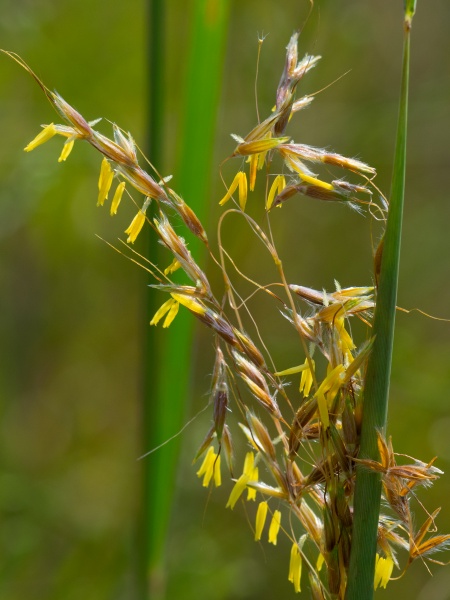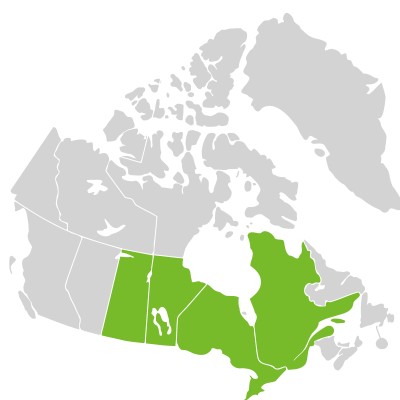 Known to be toxic - Toxic to mammals if ingested.
Known to be toxic - Toxic to mammals if ingested.

Source: Joshua Mayer
Sorghastrum nutans
Yellow False-sorghum
Faux-sorgho penché
Synonyms
nodding false-sorghum
sorgho changeant
Seeds in stock
Available at table Full Sun
Available at table Full Sun
We currently accept seeds for this plant
Bloom Colour: Green
Bloom Period: Aug - Sep
Max Height: 6.0 feet
Max Width: 3.0 feet (spreads by rhizome)
Light Condition:
 More than 6 hours of direct sun a day
Soil conditions:
More than 6 hours of direct sun a day
Soil conditions:
 Tolerates dry soil condition
Tolerates dry soil condition
 Tolerates medium soil condition
Tolerates medium soil condition
 More than 6 hours of direct sun a day
More than 6 hours of direct sun a day
 Tolerates dry soil condition
Tolerates dry soil condition
 Tolerates medium soil condition
Tolerates medium soil condition
Lifespan:
Perennial
plants that will that come back year after year
Gardener Experience:
 Self-seeding
Self-seeding
 Self-seeding
Self-seeding
Landscape Uses:
 Suitable for rock gardens
Suitable for rock gardens
 Suitable for rain gardens
Suitable for rain gardens
 Suitable for container garden
Suitable for container garden
 Suitable for school gardens
Suitable for school gardens
 Suitable for rock gardens
Suitable for rock gardens
 Suitable for rain gardens
Suitable for rain gardens
 Suitable for container garden
Suitable for container garden
 Suitable for school gardens
Suitable for school gardens
Ecological Benefits:
 Supports birds
Supports birds
 Supports pollinators
Supports pollinators
 Supports birds
Supports birds
 Supports pollinators
Supports pollinators
Tolerates:
 Tolerates salt conditions
Tolerates salt conditions
 Deer resistant
Deer resistant
 Rabbit resistant
Rabbit resistant
 Tolerates foot traffic around the plant
Tolerates foot traffic around the plant
 Tolerates sandy conditions
Tolerates sandy conditions
 Tolerates juglone conditions
Tolerates juglone conditions
 Tolerates transplantation
Tolerates transplantation
 Tolerates salt conditions
Tolerates salt conditions
 Deer resistant
Deer resistant
 Rabbit resistant
Rabbit resistant
 Tolerates foot traffic around the plant
Tolerates foot traffic around the plant
 Tolerates sandy conditions
Tolerates sandy conditions
 Tolerates juglone conditions
Tolerates juglone conditions
 Tolerates transplantation
Tolerates transplantation
Special Features and Considerations:
Plant Location
Native to Ottawa region: Yes
Distribution according to VASCAN

Ephemeral
Native
Introduced
Excluded
Extirpated
Doubtful
Absent
Thrives in Ecozones
- Boreal Plains
- Mixed Wood Plains
Ecological Benefits
Butterflies Supported by Sorghastrum nutans
No butterfly data available for this plant.
Specialized Bees Supported by Sorghastrum nutans
No bee data available for this plant.
Plants that grow in similar conditions, that bloom at the same time.
Complementary Plants
- Helianthus giganteus
Giant Sunflower
Hélianthe géant - Lobelia spicata
Pale-spike Lobelia
Lobélie à épi - Solidago rigida
Stiff Goldenrod
Verge d'or rigide - Symphyotrichum novae-angliae
New England Aster
Aster de Nouvelle-Angleterre - Teucrium canadense
Canada Germander
Germandrée du Canada
Substitute For Non-Native Plants
- Miscanthus (Silvergrass)
- Cortaderia selloana (Pampas Grass)
- Phalaris arundinacea (Reed Canary Grass)
- Pennisetum setaceum (Fountain Grass)
Sowing Information
Download Seed Envelope Labels (PDF)
- Sowing depth: Surface sow
- Sow anytime
- Stratification duration: 0 days
- Self-seeding
- Notes: Can be sown in late spring in warm soil.
Harvesting and Seed Sharing
- Harvest start month: September
- Harvesting indicator:
- Seeds are dark and dry, and easily fall off when you gently pull them off
- Harvesting:
- Use hand to detach from main stem
- Seed viability test:
- No test needed before donating
- Packaging measure: 1 rounded 1/4 teaspoon
- Seed storage:
- Air dry in paper bag or open container, for a few days until crisp
- Shake seeds to move them once in a while to prevent molding
- Cultivar: Yes, do not donate unless you know source, and there are no known cultivars in your garden or at proximity
- No harvesting video available at this time.
Toxicity Notes
Toxic to mammals if ingested.


 Canadensis
Canadensis
